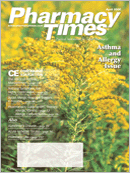Painful Diabetic Neuropathy: Treatment Is Available
Neuropathy affects up to 50% of diabetic patients, depending on the duration and extent of their disease. Even in patients with excellent glycemic control, ~20% will still develop painful diabetic neuropathy (PDN). Common symptoms in the extremities may include tingling or burning sensations, loss of sensation, cramping, and hyperalgesia (exaggerated pain response). Patients will often describe the pain as worse at night, and it can be unilateral, but the majority of cases will be bilateral. This article will be the first of a 2-part series to address the current treatments available for PDN.
Proper glycemic control is first and foremost in the prevention and treatment of neuropathy. Multiple studies, such as the Diabetes Control and Complications Trial and the UK Prospective Diabetes Study Group, have concluded that intensive blood glucose control improves neuropathic symptoms and prevents further damage to the nerves. But, even with proper glucose maintenance, the risk of developing PDN is still present, and those who do develop it need effective treatment. Treatment options are classified into 2 groups: those that deter the course of the disease by improving or enhancing nerve function, and those that alleviate symptoms only, with no associated improvement in nerve function. Both pharmacologic and nonpharmacologic treatments are available. This article will focus on the pharmacologic agents available for symptomatic relief, some of which are listed in the Table. Symptomatic treatment often must consist of careful combinations of therapies. Pharmacologic agents available include analgesics, anticonvulsants, antidepressants, and topical agents.
Analgesics
OTC and prescription analgesics are available. There are some small studies that compare the effectiveness of OTC and prescription products with placebo for treating neuropathic pain. OTC products include nonsteroidal anti-inflammatory drugs (NSAIDs) such as ibuprofen and naproxen. Some prescription analgesics which showed improvement in short-term outcomes (reduced pain, improved sleep, improved physical functioning) include controlled-release oxycodone and tramadol. There are no good long-term studies available with narcotics, but sometimes their use in PDN is limited because of adverse effects. Use of any analgesics requires careful consideration of adverse effects, especially related to long-term use. In particular, renal function and gastrointestinal side effects must be considered with chronic NSAID use. Sedation, constipation, risk of falls, and dizziness must be considered with oxycodone or tramadol use.
Anticonvulsants
Anticonvulsants, such as carbamazepine, gabapentin, and lamotrigine, can be very effective for the relief of pain from PDN. Although their pain-relieving mechanism is not well-understood, all 3 of these anticonvulsants have been proven to be superior to placebo in reducing pain and improving quality of life in patients with PDN. Adverse effects to monitor for include drowsiness, dizziness, light-headedness, and headache.
Antidepressants
Antidepressants, especially tricyclic antidepressants such as amitriptyline, nortriptyline, desipramine, and doxepin, have long been the standards of therapy for treating PDN. Although most studies conclude significant pain reduction in patients on these therapies vs placebo, the primary drawback to their use is intolerable adverse effects. In particular, anticholinergic effects such as drowsiness, dry mouth, constipation, urinary retention, and postural hypotension limit their use in many patients, especially the elderly. Other antidepressants, such as trazodone and venlafaxine, have also been shown in some small studies to reduce the pain associated with neuropathy. Small studies available with certain serotonin-specific reuptake inhibitors, such as paroxetine, fluoxetine, and citalopram, showed only marginal or no improvement in pain reduction vs placebo and should not be considered as first-line therapy. Duloxetine, a serotonin and norepinephrine reuptake inhibitor, was recently approved specifically for PDN. It may be particularly useful as first-line therapy in patients with both PDN and depression. Adverse effects of duloxetine are similar to those of other antidepressants, although usually not as severe as with the tricyclic antidepressants.
Topical Treatments
Capsaicin topical cream is believed to exert its pain-reducing effect by depleting substance P, a pain neurotransmitter. Several studies have shown significant pain reduction with the cream vs placebo. Advantages include no systemic side effects, but local irritation at the site of application can occur.
Although not yet available on the market, isosorbide dinitrate spray has shown promising results in recent studies. In a small group of 22 patients in a 12-week study, isosorbide dinitrate spray was administered once daily at night. The patients treated with active drug had a statistically significant reduction in pain and burning sensation, compared with those patients given placebo spray. Possible mechanism of action may be increased nitric oxide levels. Side effects were minimal, with only 2 patients reporting minor headaches.
With now over 20 million diabetics in the United States alone, effective treatments for diabetes-related complications are more important than ever. Treatment for PDN includes focused intensive glycemic control and adequate pain control. Whereas this article focused on the currently available pharmacologic therapies for treating the painful symptoms of neuropathy, an upcoming article will focus on disease- modifying treatments and nonpharmacologic symptomatic treatments.
Dr. Brian is a clinical specialist with Cornerstone Health Care, High Point, NC.
For a list of suggested reading, send a stamped, self-addressed envelope to: References Department, Attn. A. Stahl, Pharmacy Times, 241 Forsgate Drive, Jamesburg, NJ 08831; or send an e-mail request to: astahl@ascendmedia.com.

